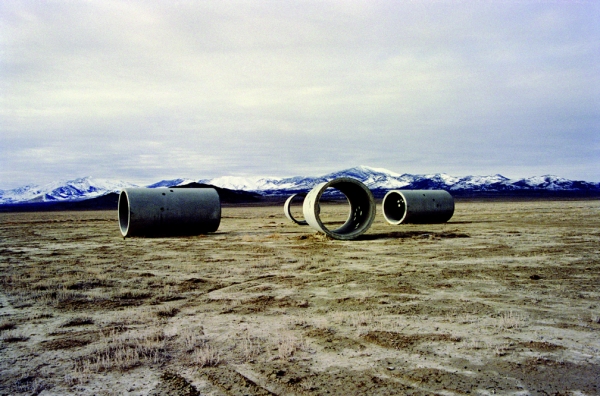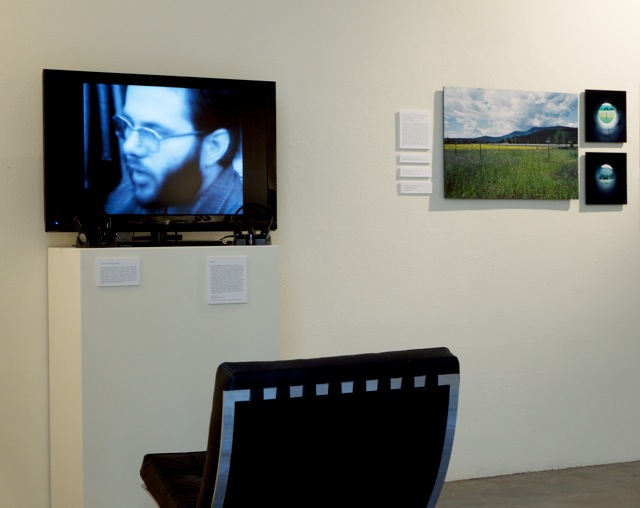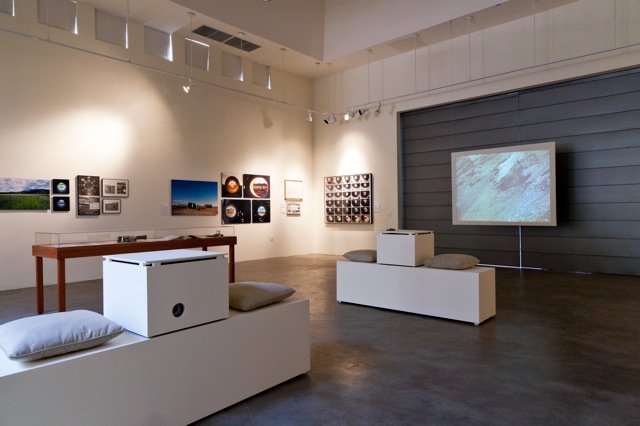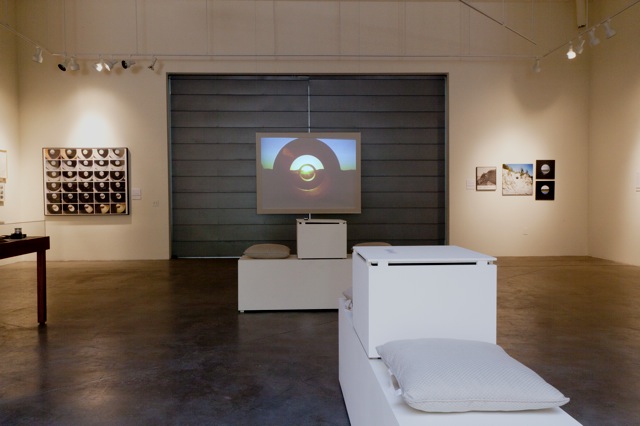
Nancy Holt's Sun Tunnels
Nancy Holt Remembered: A Review of Sightlines

Screen shot, at the SFAI installation of Sightlines, from Holt’s “Revolve,” 1977

 Editor’s Note: Nancy Holt died in New York of complications of leukemia on February 8, 2014. This post was first published in June 2012.
Editor’s Note: Nancy Holt died in New York of complications of leukemia on February 8, 2014. This post was first published in June 2012.
Nancy Holt’s Sightlines, curated by Alena J. Williams, is a touring show now enjoying a stop at Santa Fe Art Institute through June 29th. (Meantime, a group show dedicated to the land art movement, Ends of the Earth: Land Art to 1974 opened May 27th at the Geffen at Museum of Contemporary Art Los Angeles, and runs through September 3.) By the time Holt’s show closes at the the Utah Museum of Fine Arts (October 18, 2012-January 20, 2013), it will have had venues at Columbia University and at Tufts University as well as here in the interior west. Peter Kalb, in reviewing Holt’s show in Art in America commented that the exhibit and catalog “fill a conspicuous gap in the scholarship of postwar art in the U.S. and in our understanding of Holt’s aesthetic.”
While Kalb’s point is valid, it is also true that in New Mexico (Holt has resided in Galisteo since 1995), Holt’s contribution is perhaps more visible, at least to those who recognize her purposeful if restrained career arc. Ann Landi opened a Wall Street Journal article June 5th about a pilgrimage to Holt’s Sun Tunnels in the Great Basin Desert of Utah with the line that key to “understanding” the work was first to find it.
It’s hard not to quarrel with the conventions of the press (the “it’s far, it’s hot” lament), which have plenty to do with Kalb’s gap thesis regarding Holt. From land art’s beginnings in being remote by process and on purpose, certain works – and male authors – over the the ensuing four decades have stacked a hierarchy of monumentalist introverts, like Michael Heizer, who in 2005 offered a by-invitation-only journey to his Nevada City to media heavyweight Michael Kimmelman, then the NYT chief art critic.
This is all back story to Nancy Holt whose part in the “heroic and grandiose” period in American art, to quote Landi, was exceptional in all meanings of the word, and doesn’t fit into the legend-never-dies stories about artists with egos so big each needed a state to himself ( viz, Heizer in Nevada, Charles Ross in New Mexico, James Turrell in Arizona; Robert Smithson, Utah).
This show situates Holt as an instrumental and perennially experimental figure whose art has continued 40 years, palpably physical and inquiring into the metaphysical. We are causal, we humans, and so there’s an unspoken query about what may derive from biography: Smithson’s, Holt’s husband’s, sudden death aged 35 in 1973, in a plane crash while surveying the site of Amarillo Ramp.
What Sightlines stresses, historically (and early) is the fruitfulness of their collaboration, of dialogues about scales of vision at Mono Lake, in the Pine Barrens, where they trekked the new super-natural terrain. It doesn’t seem unusual that in ’68 Holt began to photograph “Western Graveyards,” swellings in the ground encountered in such Marshall Dillon outbacks as Lone Pine, California, while traveling with Smithson and Heizer that summer. Photo documentation of her “locators,” soldered lengths of steel pipe telescoping apertures for sunlight, starlight, mirrored light, daylight, call out the wood floor in her 799 Greenwich Street studio, New York, where the contraption looks a little gawky, rough, like the young artist probably was. Throughout, there was the doing and the record-making.
Self-consciousness was not absent ( “Do you think that’s a fixture or a window?” comes the artist’s slightly plaintive inquiry of a window frame glimpsed through a locator).
Nancy Holt is a tall person, and I thought frequently in this show how John McCracken’s planks had to do with the scale of his own body in space, leaning up slim against walls. She is also a good actor as shown in fool-around-with-the-camera experiments, such as 1969’s East Coast/West Coast, in which she plays the Barnard intellectual to Smithson’s Santa Cruz tripper, hilariously. “You’re some kind of mystical pragmatist,” she declares. “I’m mindless, he says. Joan Jonas looks on.
To seek out the disassociation in Holt’s work is a charm of the show, the way that the artist went from dyadic situations, like photographing dancer Joan Jonas’s scalings Over the Hill and Down Hill, to a form of inward-trending psychic drift, notably in the 1974 video Underscan, composed of still b-and-w photographs of Holt’s Auntie’s house. You’re seeing lace doilies, stuff belonging so it seems to an elderly person, and Holt’s voice narrating, mundanely, a sequence of accidents: I fell, he fell. It’s hypnotic and dislocated; specific objects matched with something like hearing though can you watch and listen at once?
Holt has begun in 1973 the monumental earthwork: The Sun Tunnels, in the Great Basin desert of Utah (1973-1976); she has concluded Missoula Ranch Locators: Vision Compressed (1972); and is about to deal with water (mirrored light) in Hydra’s Head (1974.) And, she’s done some burying of concrete poetry for friends, way out in those white blinding spaces, and here you can peruse maps of where they were meant to treasure-hunt her secret messages.
It’s here you get a sense for Holt: low, sweet voice; perception always being inquired of; a form of introspection often unsettling given the residual realization, with her work, that you are seeing into something far bigger than its frame.
This show does ask something of you in that it wants you to sit down and watch, but the seats are comfortable and the headphones too. I spent nearly two full viewings with Revolve, Holt’s 1977 video of her friend, filmmaker Dennis Wheeler, who died of leukemia in November that year, discussing his illness, the ecstasy of dying. It seems hopeful in a way given that it was Smithson who said a camera was a portable tomb, to hear word sequences that Wheeler utters replayed, as if (suggested) memory can be electronically jarred back into dynamism. Holt’s electric expanded vision seems to be one of after-image, of second looks, and of always measuring how tight time is, against the boundlessness of what we call space.
